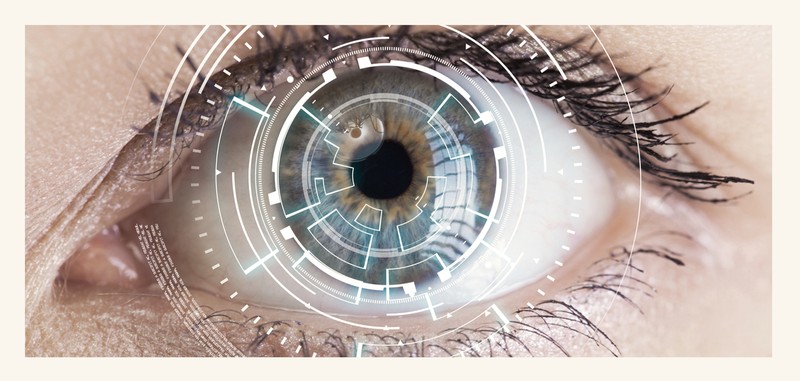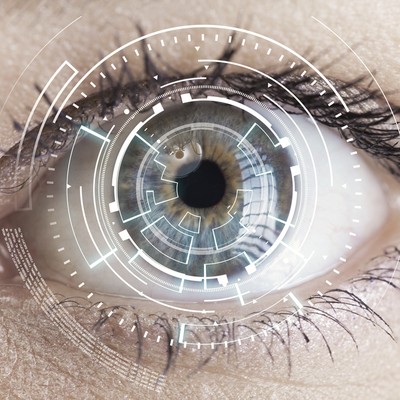

Everything You Need To Know About Cataracts
What Exactly Is A Cataract?
Those suffering from a cataract experience a clouding of the natural lens inside the eye. The condition is very common, with 60% of the population experiencing the visual complication as they reach their 60s. “Cataracts occur when opacities develop in the clear lens inside your eye, which reduces the amount and quality of light reaching the back of the eye,” explains Dr Elizabeth Hawkes, consultant oculoplastic and ophthalmic surgeon. “Over time, they tend to become denser, which results in blurred vision. If you have a cataract, it may feel a little like looking through blurred glass. While stronger lighting and new glasses can sometimes help, if impaired vision interferes with your daily activities, you may want to consider surgery.”
Who Gets Them?
As we age, the proteins that make up the eye’s natural lens can clump together – these clumps are the cataracts and are what causes the cloudiness. No-one knows for sure why the eye’s lens changes as we age, forming cataracts, but risk factors include smoking, genetic causes, infections, exposure to UV light over prolonged periods, certain medications such as steroids, medical conditions such as diabetes and a history of previous eye surgery. “One in three adults over the age of 65 will get a cataract,” adds Mr Amir Hamid, surgeon and medical director of specialist eye hospital group Optegra. “In fact, it is diagnosed so frequently that it’s the most performed elective surgery in the NHS. However, we are also increasingly diagnosing cataracts from an earlier age – even from the age of 40 – so symptoms shouldn’t be ignored.”
What Pattern Do They Tend To Take?
Cataracts typically develop in both eyes, but not always at the same time, says Elizabeth. “So, when one cataract is more advanced than the other, a difference in vision between the two eyes can occur.”
Aside From Cloudy Vision, Are There Any Other Symptoms?
The problem tends to develop slowly over time and, eventually, cataracts result in a gradual loss of vision. “The most common symptom is cloudy vision – as though a ‘fog’ has come over the eyes, but blurred vision is also common, and it may feel like colours are fading,” adds Amir. “Cataracts can also cause glare from lights, which can make driving at night-time feel more challenging, while less common symptoms include double vision and headaches. Symptoms tend to develop gradually over months or years – not overnight.”
How Are They Diagnosed?
They can usually be picked up during a normal eye test, which is why it’s important to have one regularly (once every two years or more frequently if your optician recommends it). During an eye exam, your optician will carry out several tests, and if they suspect you have cataracts, it’s likely they will refer you on to an eye specialist (ophthalmologist), who can confirm the diagnosis and your plan of treatment.
Do Cataracts Always Need Treatment?
If you suspect you have a cataract, get it seen to as soon as possible as, when left untreated, they become much harder to fix. Waiting lists for an initial hospital eye appointment have spiralled to more than 600,000 – a third more than before the pandemic, with 27,000 people having waited more than two years for an appointment. Plus, according to the Royal College of Ophthalmologists, at least 10,000 patients with age-related eye conditions such as glaucoma and macular degeneration have missed out on vital treatment. “One consequence of the delays in eye treatment is a doubling of cases of white cataracts – the most severe form of the condition, when the lens clouds over completely, to the extent that the patient is effectively blind in that eye,” says Amir. However, cataracts don’t always require treatment after they’re diagnosed, especially if they aren’t bothering you. Initially, a simple change of your prescription may restore acceptable vision.
So, What Are Your Treatment Options?
If you decide to treat your cataracts, surgery is a pain-free procedure which takes around 15 to 20 minutes. It’s also a safe, effective and low-risk procedure, Elizabeth adds. “Most procedures are performed under local anaesthetic, often only requiring numbing eye drops, and you can usually go home on the same day. The cataract is removed using an ultrasonic probe through a small incision, and a new, clear intra-ocular lens is then implanted into the eye,” she explains. You will not normally need stitches, but your eye will be covered to protect it from knocks after the operation. You will also need someone to drive you home and look after you for 24 hours after surgery.
Is It Worth Going Private?
“When cataract surgery is done on the NHS, patients are treated with a standard intra-ocular lens (IOL) – a synthetic lens which aims to improve clarity of vision, but patients may need to wear reading and/or long-distance glasses even if they weren’t worn previously,” Amir explains. “Private patients have the option to ‘upgrade’ to a premium IOL, which is tailored specifically to your personal vision requirements, and means you can also be free of glasses or contact lenses as well as cataract, all in one procedure. At Optegra, we offer both options, and we work with the NHS to treat patients within four to six weeks of referral. It’s also a myth that you must wait for a cataract to be ‘ripe’ for treatment – it can be removed at any point.”
What’s The Recovery Like?
Most patients notice significant visual improvement after surgery, Elizabeth adds. “Often, patients report very rapid improvement in their eyesight, but it can take a couple of weeks for the eye to recover completely. You will be given a course of eye drops to control inflammation and reduce the risk of infection. Most patients return to their normal activities in one to two weeks,” she adds. Amir says you’ll also need to ensure optimal hygiene and use prescription drops for four weeks.
Finally, Is There Anything You Can Do To Prevent Them Post-Surgery?
Once treated, there’s no way a cataract can return, as you will have been fitted with an artificial lens that will last a lifetime. “However, around 10% of people may develop clouding of the lens capsule around a year after the initial surgery, which may require a simple laser procedure,” Amir concludes. “And while it’s virtually impossible to avoid getting one at all, avoiding smoking and eating vitamin C-rich foods can help.”
For more information, visit Optegra.com or email icare@optegra.com for a free consultation and advice if you have cataract or any vision correction needs. Dr Elizabeth Hawkes has performed over 2,000 cataract operations and is involved in teaching and training the next generation of cataract surgeons – visit DrElizabethHawkes.com for more information.
DISCLAIMER: Features published by SheerLuxe are not intended to treat, diagnose, cure or prevent any disease. Always seek the advice of your GP or another qualified healthcare provider for any questions you have regarding a medical condition, and before undertaking any diet, exercise or other health-related programme.
DISCLAIMER: We endeavour to always credit the correct original source of every image we use. If you think a credit may be incorrect, please contact us at info@sheerluxe.com.

